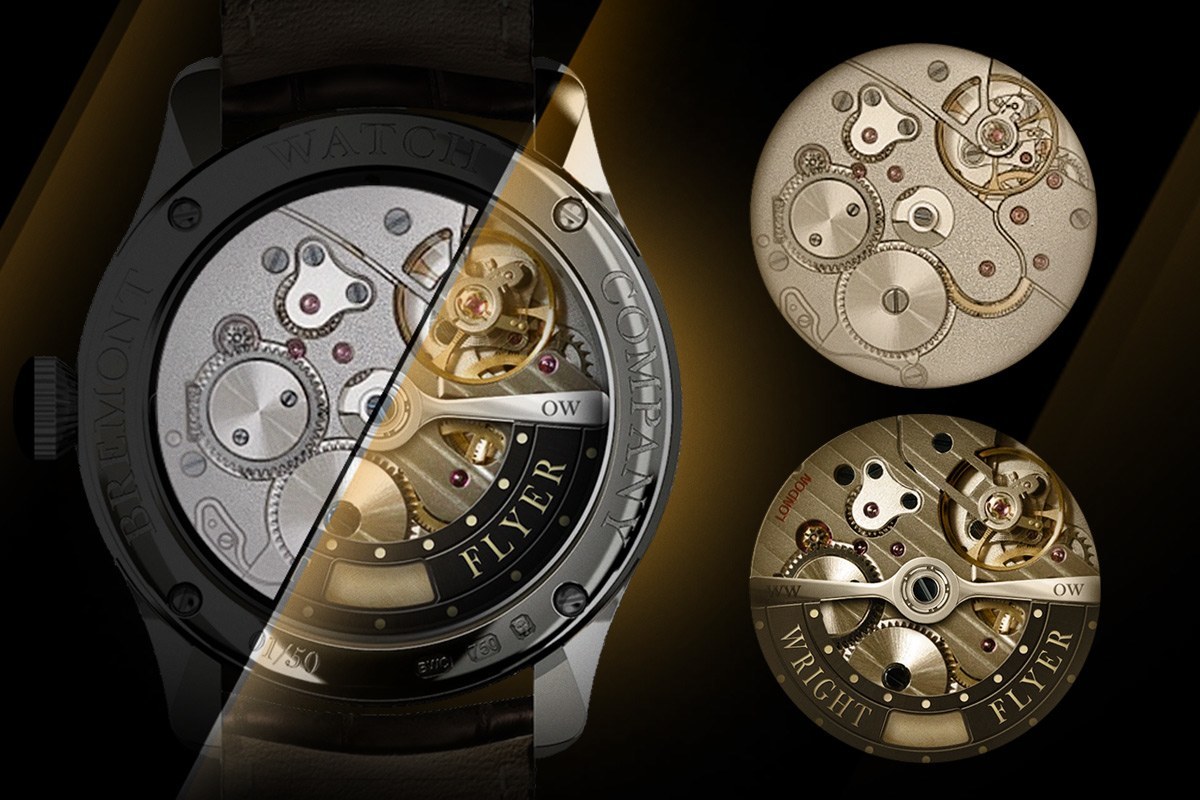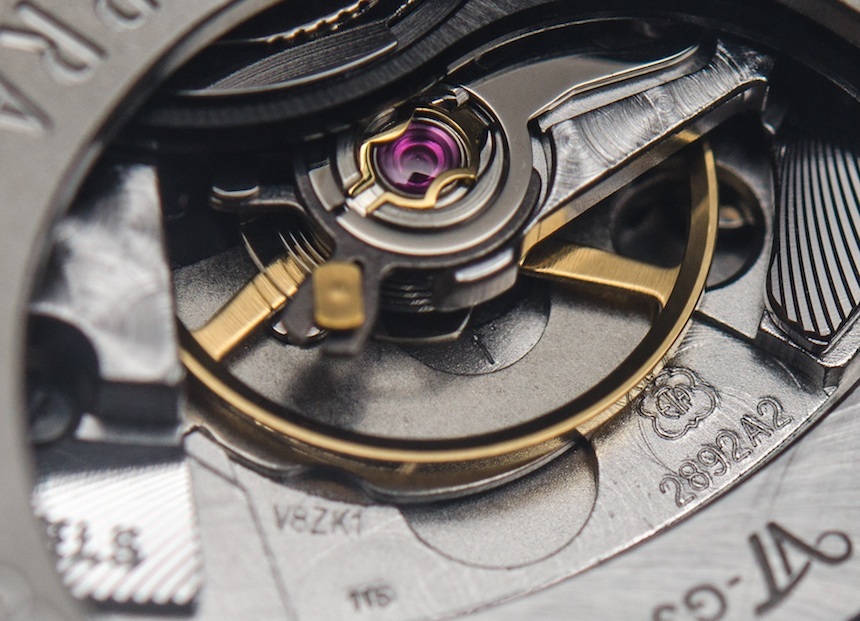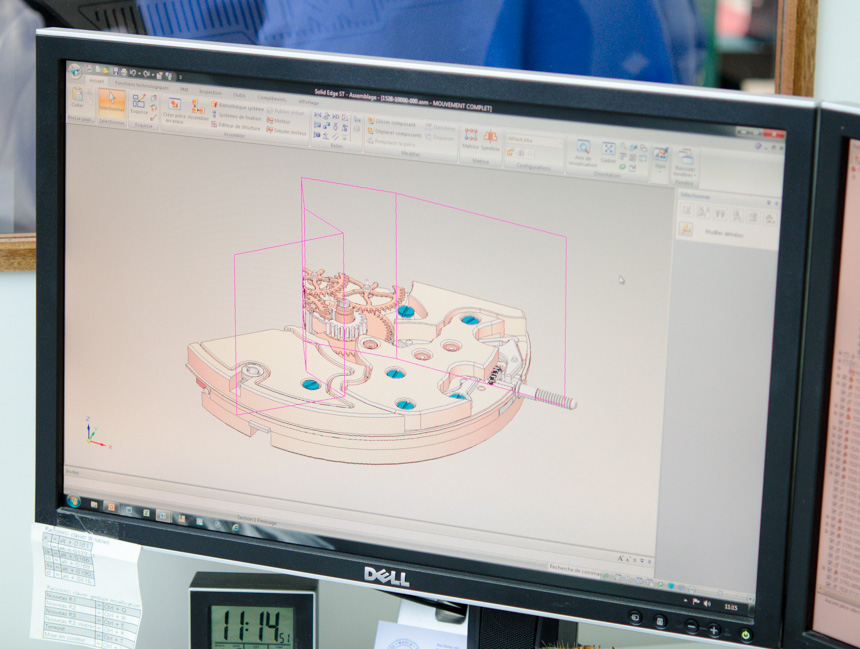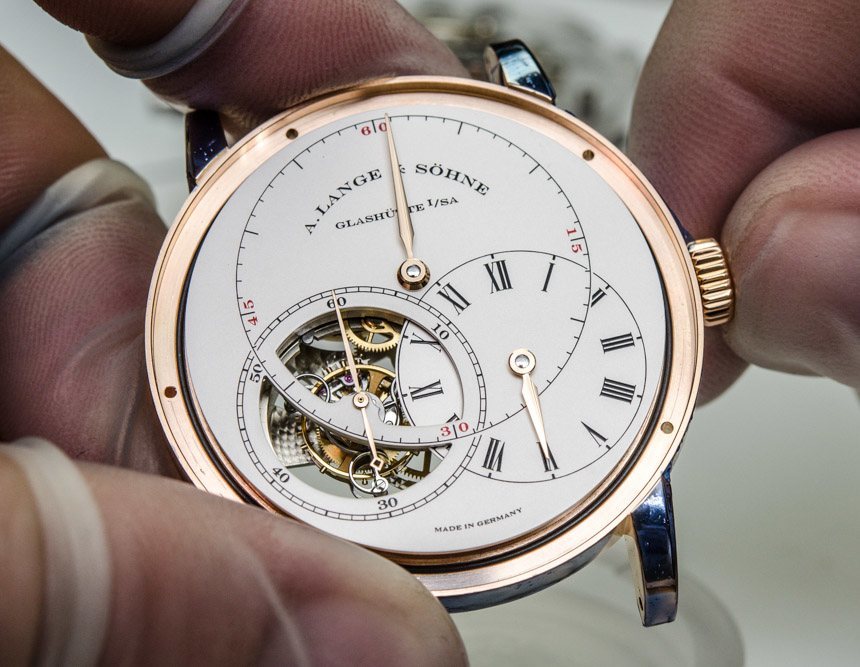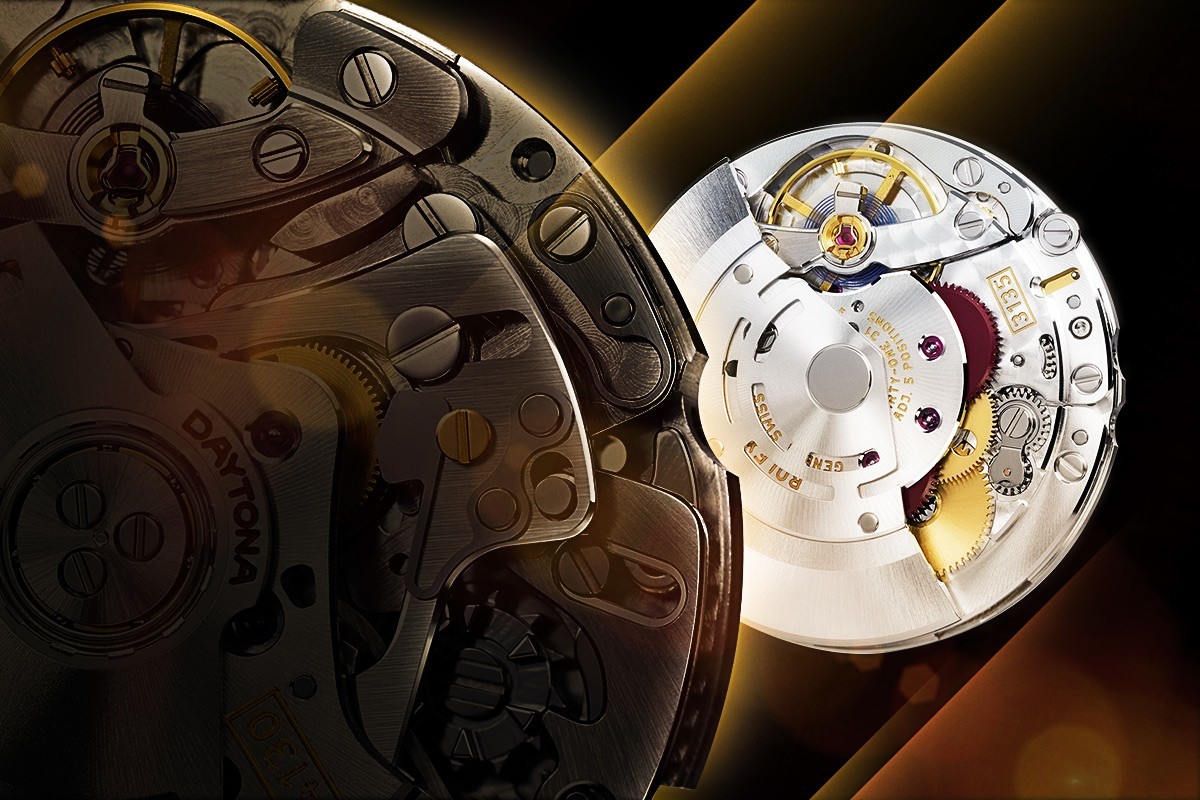
Rolex currently produces in-house made movements for their entire watch collection, but that wasn’t always the case. A few small parts today may still come from niche third-party Swiss suppliers.
The movement of a watch is the engine inside of it which “makes it work.” I understand that novices to the world of watches may not even be aware of what “watch movement” means. Watch movements are generally classified as mechanical or quartz (electronic), and are, in many ways, what draw people to purchase or desire a particular timepiece. Drawing an analogy from the world of cars, you don’t necessarily buy a new vehicle simply because of the engine inside of it and its claimed performance, but because of the complete design, driving experience, and mechanical performance put together. Like car engines, when it comes to watch movements, there is no lack of topics to discuss.
Today, we will be discussing a very important matter concerning watch movements: who made them, and where they come from. Specifically, we want to define how watch makers and companies should describe and/or name the watch movements they use. Unlike most of the articles on aBlogtoWatch, intended for mainly consumers and watch collectors, this article is something we want watch lovers to comment on, but is actually intended as a message to the watch industry itself. Furthermore, we will be focused on discussing mechanical watch movements, rather than quartz ones.
Truth In Watch Movement Advertising
There are probably hundreds, if not thousands, of companies out there making watches, but only a handful that are producing movements, especially mechanical ones. You have to understand that even your basic mechanical watch movement has over 100 parts. Some movements have fewer parts, but many have a lot more. Many of these parts are highly specialized, and most are very small. There are very few companies out there that are able to produce all of the parts needed to make a complete watch movement.
Why is that important to mention? Because, in the watch world, the “holy grail” for any brand is to produce their movements entirely in-house, even though that is rarely actually achieved. Watch makers are notoriously misleading when it comes to discussing the origins and nature of their watch movements. In fact, this entire article is about putting down a set of terms and guidelines for brands to follow when describing the movements inside of their watches.
Why does aBlogtoWatch feel the need to do this? Well, that is a good question. One of the main reasons is the existence of “plausible deniability” in regard to what the term “in-house” or “in-house made” even means. Someone recently rhetorically asked me, “what does in-house even mean? So many people are using it, when they don’t make their own parts!” In many ways, the question is sound. If you are a watch company, and want to tout your movements as “in-house,” there aren’t really a set of guidelines on what that exactly means. It also opens the door for brands who clearly do not produce in-house made movements to refer to their movements in a misleading manner. As I hope you can see, there is an issue in the industry regarding the existence of a generally agreed upon naming convention to indicate whether or not, or to what degree, a movement is made in-house.
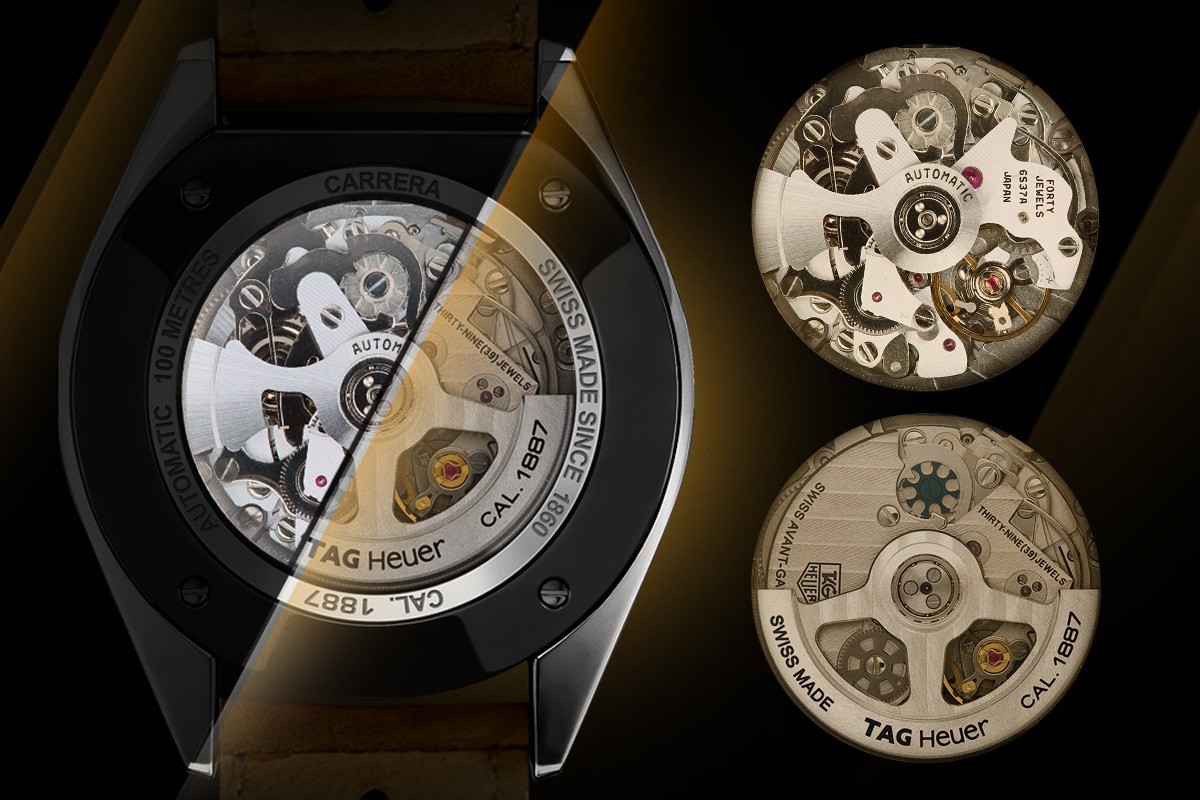
For this movement TAG Heuer sourced the base movement design from another watchmaking company but actually produces these movements in-house.
Why Is “In-House Made” Such A Big Deal?
This is a question I ask myself often, as the placement of an in-house made movement in a watch is not always a good or desirable thing. In fact, movements are at the heart of a great irony or contradiction of being a watch lover. For example, when you get a watch, you want something that is accurate and reliable. Arguably the most accurate and reliable watches are quartz-powered. So why, then, are we so obsessed with mechanical movements? Another, more complex, irony is that many of the “sourced” watch movements that companies buy from major suppliers are very good. Often much better and more reliable or serviceable than in-house made movements. So why is it that practical people still want movements which are in-house made?
I don’t have all of the answers to these questions right now, as many of them are topics I have been pondering for years. What I can say, is that in-house movements do a few important things to the desirability of a watch. First of all, people don’t particularly like to buy watches for high prices that contain the same base “engine” as many other watches. The idea is that, if you are going to buy a watch with a generic movement, you better be paying a “generic price.” Also, mechanical watches are more-or-less a product of the luxury industry today. When it comes to luxury, something that is highly valued is exclusivity. There is nothing particularly special or exclusive about a company plopping in a movement from another company into their own watch and calling it high-end.
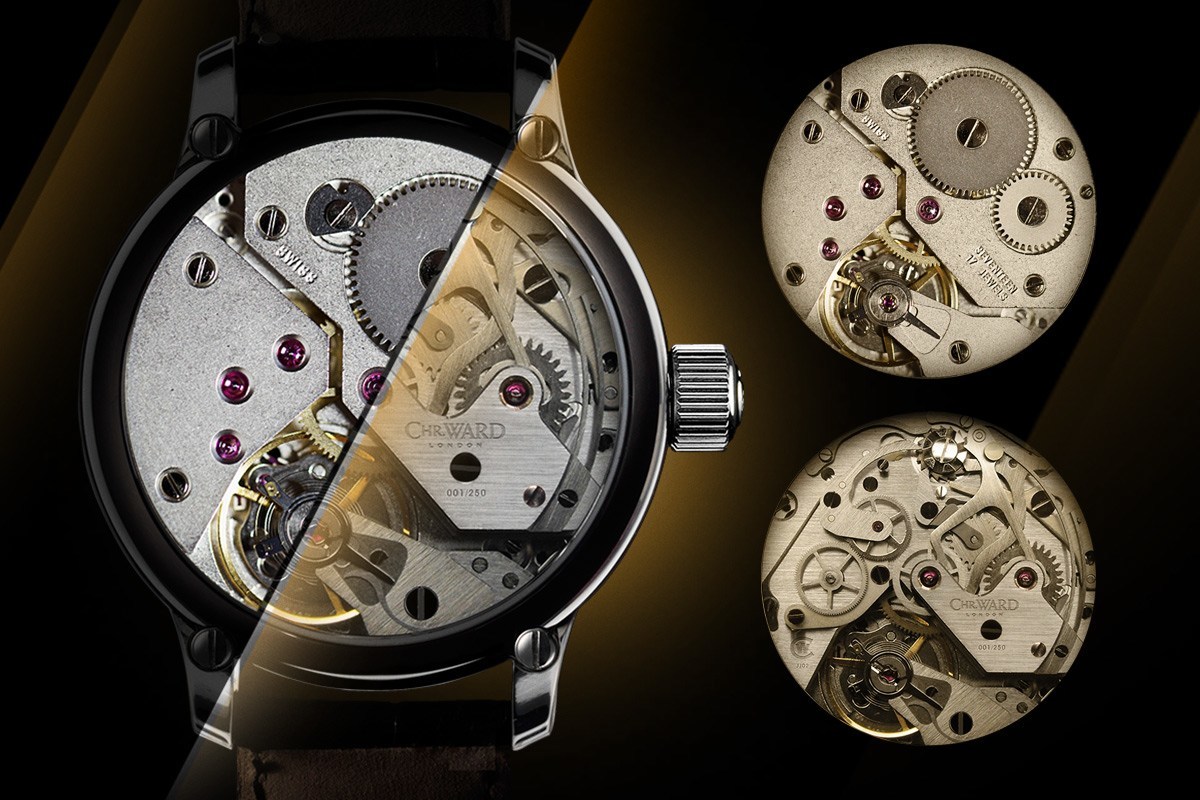
Christopher Ward modified a popular base Swiss ETA movement as the foundation for a new movement with partially in-house made parts.
So, while movements produced by outside specialists, such as ETA, Sellita, Soprod, and many others, are often very reliable and of a high quality, they simply don’t feel as special. Another irony is that companies that produce their own movements can charge more for their watches. This doesn’t actually make sense in the context of manufacturing. In other industries, when a company brings the production of a new part in-house, it lowers the cost of that part (especially over time). Thus, if the watch industry followed most other industries, most companies that advertise in-house made movements would charge less than those companies that rely on movements from suppliers – but that isn’t the case. The way the industry gets around the “norm” is by claiming that their movements are more complicated, better finished, or simply, more interesting. More often than not, these companies don’t really say anything at all, offering the tacit message to the consumer that, “of course in-house is better!”
There are really two main reasons a watch company wants to produce movements in-house today. The first reason is what I have been discussing, and is related to marketing, building up the exclusivity of the brand, and being able to justify higher prices for their watches. The second reason is far more practical, and that is because, as of today, it is both expensive and difficult to get movements from outside suppliers.
Producing your own in-house made movement is an incredible challenge. It requires an in-house mastery of literally dozens of special trades, as well as a huge investment in machinery and tools. To say that you as a company make in-house movements, if anything, should be an indicator to consumers that you are here to stay, and that you’ve made a serious investment toward the future of your products.
To summarize, there are both good and not-so-convincing reasons why a company would want to make movements in-house. However, when they do claim to make movements in-house they often don’t back it up with facts, or are clearly not using fully in-house movements. That is something that we at aBlogtoWatch would like to change, and we are advocating for a new era of “truth in watch movement advertising.”

Exterior view of one of Rolex’s manufacturing facilities near Geneva. Their movements are produced near Bienne, Switzerland.
The Rarity Of A Truly In-House Made Watch Movement
There are very few companies – if any – that truly make all the parts necessary to produce a complete watch case and movement. The Swatch Group can probably claim to be one, but that is simply because they own so many companies that do so much. Another exception might be Seiko in Japan, that even produces synthetic sapphire for watch case crystals. Aside from those two, and perhaps a few exceptions, almost all watch companies rely on at least some parts from outside suppliers. Before moving on, I want to unequivocally state that there is nothing at all wrong with that.
To be a company means you need to know where to source the best parts, labor, tools, etc… No excuse is necessary for not producing everything in-house. The only thing that companies who produce very expensive items should do, is explain to their customers that they are getting parts from other great companies. The Swiss watch industry is called an “industry” for a reason. It has been historically made up of a series of small companies that each have specialized roles in the production of movements. The companies work together to create “Swiss-Made” watches. Though, in more recent times, there has been a rather unfriendly trend in watch companies trying to take full credit for work that isn’t theirs. We find this to be rather unfortunate, and can only hypothesize that it is a function of the Swiss having a tendency to be secretive, as well as trying to maintain the image of being able to offer a much more expensive value proposition to customers by claiming that “they do it all.”
Most of the companies that produce truly “in-house made watch movements” (even according to our definition) still purchase certain highly specialized parts from suppliers. These parts can include items like synthetic ruby palettes, springs, and screws. To hold a company responsible for creating these parts (even some do) is a bit silly. It would be like asking a car maker to produce their own tires.
In-House Made & In-House Designed
Designing a new watch movement is often as hard as building one. Today, companies are very lucky to have the assistance of computer software, but the effort required in designing a new miniature machine is very labor intensive. There is a difference between “in-house made” and “in-house designed” that consumers should be aware of, because it isn’t always the case that these two designations go together.
There are companies that produce movements in-house that they did not originally design, or that they perhaps only modified a bit. For many watch companies, the rules of patent law are on their side. Mechanical watch movement technology is often rather old, so when patents expire, many types of movements or parts of movements may be freely produced by anyone with the skill and machinery to do so. There are also a lot of companies that go to specialists to produce movements for them. Some smaller brands with the desire to have unique movements, often go to one supplier to design the movement, and another supplier to produce it. These movements are indeed unique and exclusive, but they are neither in-house made nor designed.
I am not trying to suggest that in-house made is better or worse that in-house designed, but rather that the two concepts are distinct, and that savvy consumers looking to spend thousands of dollars (or much more) on a watch should be aware of the differences. Of course, the meaning of these terms can become quite confusing when brands own the external companies that either design or produce the movements for them.
In regard to what we feel when a company owns another company that provides such services, I’ll say this: As long as a company can claim that it used its efforts with an exclusive service provider that is owned by them, it doesn’t matter to us if the company that designs or produces movements is separate from the brand itself. Stating otherwise would place unreasonable restrictions on larger companies that have a range of subsidiaries who perform different services. Note that, in some instances, those same companies that produce movements for a brand, may also produce them for other, outside watch brands.
The Big Groups Versus The Small Companies
Mega companies, such as the Swatch Group, Richemont, and LVMH not only own a lot of watch brands, but also supplier companies that produce a range of parts or offer important services to the watch companies. Further, it is often the case that a watch movement maker and a brand are under the same corporate umbrella. Because of this, you would think that these companies could claim their movements are “in-house,” but this is often not the case.
Hamilton, for instance, could claim that its movements (produced by ETA) are in-house, because both Hamilton and ETA are part of the Swatch Group family. That doesn’t happen. Most of these major brands are careful not to call their stock movements in-house, because there is nothing particularly unique or exclusive about them. We have found that the larger companies tend to be pretty straight forward about “in-house made.” They may not be particularly open about who their suppliers are, but they don’t go around blatantly advertising, “in-house made.”
Alternatively, we find that many smaller or independent watch brands are more likely to say “in-house made,” when there are doubts about their ability to apply such terms. One likely reason is that smaller companies perhaps want to appear larger or more important to consumers next to the “big boys.” Small companies also have a reputation for putting sourced movements into their watches, and are often penalized for doing so, when trying to charge high prices. Thus, my assumption is that small companies use the term “in-house made” as part of a larger branding and value proposition strategy with potential customers.
The Irony Of Who Cares About In-House Made Movements
Survey most watch retailers and they will freely admit that the “lay person” buying mechanical watches doesn’t particularly care whether or not the movements are made in-house. Perhaps they don’t even understand the difference. The people who do care are the seasoned and educated watch lovers. So this presents an interesting situation for watch brands.
When a watch brand releases information about a new watch product, they discuss the movement inside of that product and attempt to share details about it. That information – often in the form of a press release – is relied upon by watch journalists, as well as those collectors who are interested in getting the most recent industry information, straight from the brands.
I say this, because brands are aware that the people standing at the front of the line to get information about their new products are the precise people who really care about their products. Of course, watch lovers have preferences, and each wants something different in the items they purchase, but there is one thing that all consumers want: not to be lied to. That is a strong use of words, but that is the exact feeling watch consumers have when they are given one piece of information by a brand, and the truth turns out to be something different.
The people interested in the movement inside of a watch are the same people who are going to be looking very closely at the details provided by a watch company. Thus, watch brands have a distinct responsibility to themselves to ensure that the information they offer in regard to the origin and production of a movement is accurate. The danger is in having consumers feel misled or flat-out deceived. Luxury consumers can be rather skeptical, and for good reason. When a maker of expensive goods asks a consumer to pay a high amount for those goods, the most important sentiment between the two parties is trust: trust that the brand will honor their promises, and trust that the information the consumer believes about the product is accurate. Without this trust, very little luxury consumption would be taking place.
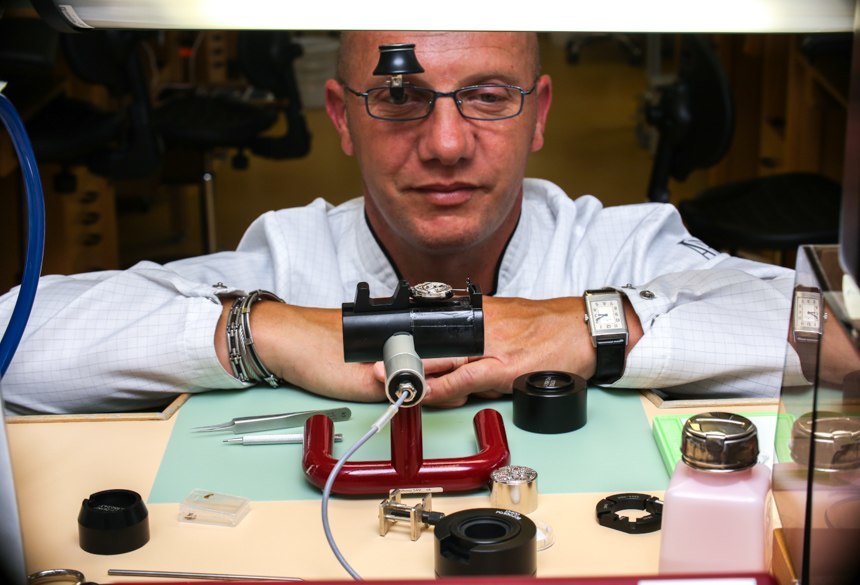
The New Definition Of In-House Made Movements And A Way To Classify Watch Calibers
So here is the meat of this article. You’ve had to consume over 2,500 words to get here, but I did need to explain the issue to those people not as familiar with the topic as the mature watch lover community. aBlogtoWatch hereby suggests the following terms (or slight variations) and definitions that brands should use when describing the nature of the mechanical movements inside of their watches.
-
100% In-House Made & Designed Movement
The holy grail of in-house production for watch brands. Indicating that a movement is 100% In-House Made & Designed means that, not only was the movement designed in-house, but also that 100% of its parts are produced in-house as well. This term should be rare to see.
-
In-House Designed Movement
In-House Designed can be combined with In-House Made, but as discussed above, the terms are distinct. An in-house designed movement is designed internally at a watch company, regardless of where it is produced. Sometimes, the term “Developed” is also used in conjunction with “Designed.” These terms are mostly synonymous, but “developed” can also imply that a watch was tested and that prototyping occurred in-house as well.
-
In-House Made Movement
Given the practical realities of modern watchmaking, it is not necessary for a watch company to produce 100% of its parts in-house, in order to use the term “In-House Made,” when applied to a movement. As discussed above, given the fact that, even for companies who do “most” of the production in-house, most still rely on outside suppliers for certain parts. There is nothing wrong with this, and this even applies to companies such as Rolex and Patek Philippe.
For a company to use the term “In-House Made,” we prefer that most of the parts are made in-house save for some smaller specialized parts. In-house made movements are typically designed in-house (but not all the time), and tend to suggest that a company has the ability to produce a range of movements and can be flexible enough to develop new movements. If a company is using externally sourced parts, other than simple screws, springs, and rubies, we might suggest the below term.
-
Movement Partially Made With In-House Parts
Most “in-house made movements” today are actually Movements Partially Made With In-House Parts. In fact, another way of saying “in-house made movement” today, might be, “movement made mostly with in-house made parts.” The term here applies to when a watch contains a movement with anywhere from a few to a lot of in-house made parts, but there are necessary entire parts or systems that come from outside suppliers.
A great example of this is when a company uses a base movement and produces a module in-house that goes over the base movement. Modules are movement-like systems that add functionality to more simple base movements. Some companies produce modules entirely in-house and use entire movements from outside suppliers, or might modify outside movements before using in-house modules.
Movements Partially Made With In-House Parts can also include situations when a company purchases gear trains and other essential parts and then produces some of their own bridges and plates, or even some screws.
-
Exclusive Movement
A watch company can claim to use an “Exclusive Movement” when it works with an outside movement maker to develop a unique movement that will only go inside that brand’s watches. This is like the situation discussed above, when a watch company works with an outside supplier to, not only design, but also produce a movement. The watch brand itself can easily claim that no one else (as in another watch company) is using the specific movement (thus it is exclusive), but they cannot claim to have been part of the design or production.
-
Customized Movement
Often times, when a watch maker purchases movements from an outside supplier, they don’t just stick them in their watch cases and call it a day. Much of the time, a watch company will want to enhance a movement with some custom decoration, or even some parts such as a customized automatic rotor. Customized Movements are those purchased from outside suppliers and then given some special aesthetic, or even some minor mechanical modifications.
A high degree of customization might take a watch into the realm of containing a Movement Partially Made With In-House Parts, or might use no external parts and involve many hours of special decoration, engraving, or skeletonization to beautify a base movement. Basically, whether or not a company dedicates a lot of effort to decoration, or just uses a customized rotor, they might be using a Customized Movement purchased from an outside company.
-
Base Movement
Often times, watch companies refer to the movements they may later customize as, “Base Movements.” Thus, we will use “Base Movement” as the term for what are essentially unmodified movements purchased from outside suppliers. These are either complete movements or kits (ebauches). This means that a company may be purchasing movements more-or-less ready and designed to be cased, or they may purchase movement kits, which their watchmakers must assemble before casing them in watches (though the latter practice without some type of customization is uncommon).
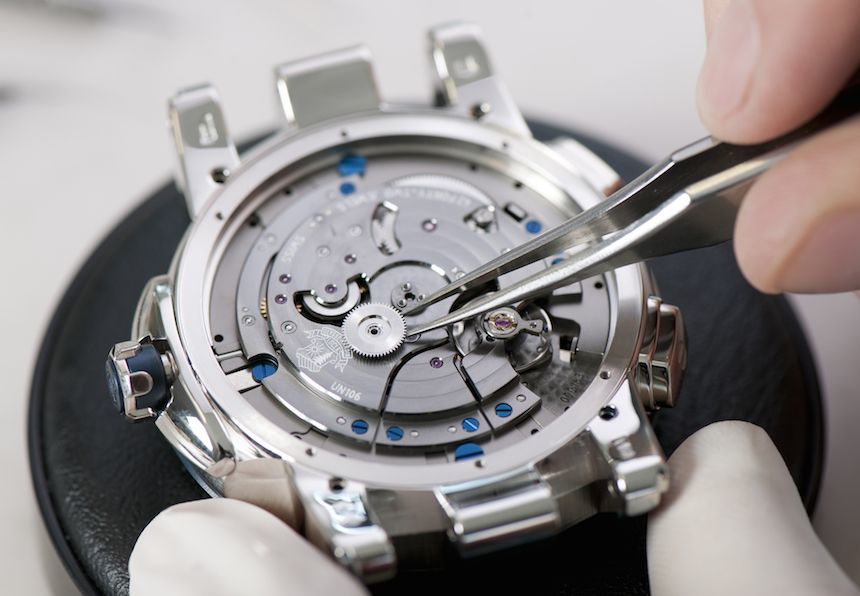
What To Do With These Watch Movement Definitions
aBlogtoWatch has no authority over what terminology the greater watch industry uses in how to describe the nature of the movements that are used in watches. However, we advocate for a strict policy of openness, in order to allow consumers to feel as though they truly understand a brand that they are being asked to invest in. Of course, a larger question is where watch companies purchase parts from, and where the suppliers are located. This gets into an entirely different topic altogether, and if we can at least get more brands to be straight-forward in how they define their movements, we will feel that it is a great benefit for the consumer.
Therefore, if you are the owner or employee of a watch company, and are involved in the launch of a new product, be mindful of the definitions laid forth in this article. If you are found to be using misleading terms to describe the origin of your movements, you will not be able to claim ignorance of what “in-house” means, since we have given you rather simple guidelines. Do you work with outside suppliers? That’s fine. Celebrate the quality partners you work with, and make it clear that, as a company, you are interested in getting the best components from the best suppliers. There is nothing wrong with that. All we want is for watch companies to respect the consumers who actually care what movements are in their watches, and not create a difficult-to-remedy situation where consumers feel misled. Now, get back to making some great in-house or outside watches and movements.
Last, we understand that this is a complex topic with a lot of nuances and considerations. We encourage people who’d like to add to or take issue with the topic to comment below, since issues of this importance are never complete without healthy feedback from the community.

